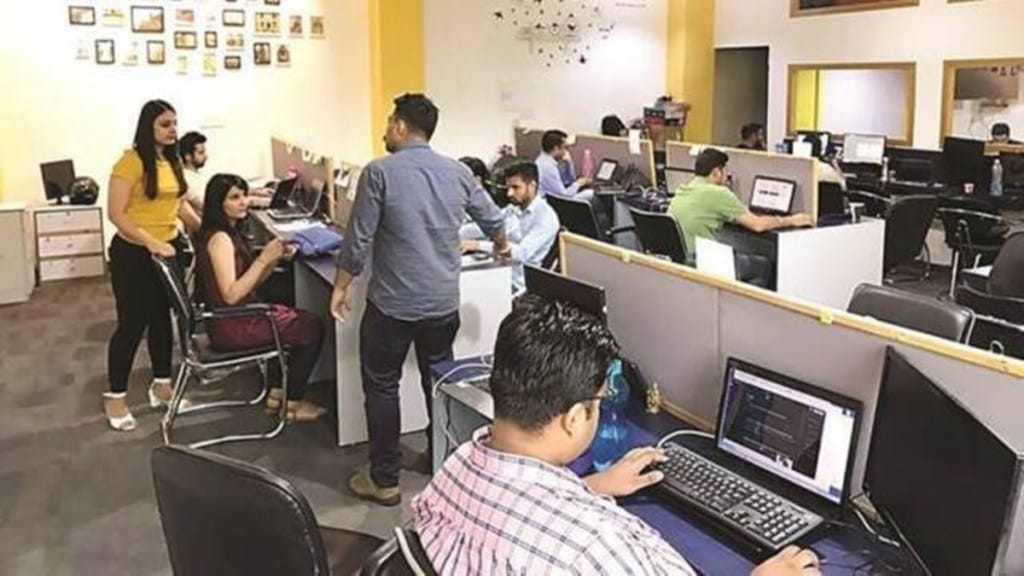By Mehul Pandya
The MSME (micro, small, and medium enterprises) segment is a critical component of the Indian economy, serving as a significant source of employment and export revenue. Its importance is further amplified by the government’s ‘Make in India’ initiative, which recognises that the manufacturing sector’s growth is dependent on the inclusive development of all segments.
As per the Ministry of MSME’s 2021 report, there are more than 63 million MSMEs in India, contributing to nearly 30% of the country’s GDP and employing over 110 million individuals. The sector has played a crucial role in fostering inclusive growth, creating job opportunities, and addressing regional disparities. Despite its significance, the MSME sector in India encounters several hurdles that hinder its growth.
Also read: Pumped storage key to energy transition
These challenges include limited access to finance, inadequate availability of skilled labour, and insufficient infrastructure. MSMEs usually rely on informal sources of funding, such as personal contacts and moneylenders. The smaller ones in the pool often lack the necessary knowledge of financial instruments like loans, interest rates, and credit scores, which makes it difficult for them to navigate the complex financial landscape and secure affordable credit. Additionally, the absence of a well-developed credit infrastructure is another obstacle faced by SMEs in India. Due to their perceived high risk, banks and financial institutions are often reluctant to lend to SMEs, and the absence of collateral and credit history further exacerbates the problem, making it even more difficult for MSMEs to obtain credit.
To address the challenges faced by the MSME sector and improve access to credit, the Indian government has implemented several initiatives and schemes such as the Prime Minister’s Employment Generation Programme (PMEGP), Trade Receivables Discounting System (TReDS), and Pradhan Mantri Mudra Yojana (PMMY) scheme. These policies have resulted in a significant increase in credit outstanding to the MSME sector by scheduled commercial banks, rising from `11.7 trillion at the end of FY15 to `20.1 trillion at the end of FY22.
The MSME sector was hit hard by the Covid-19 pandemic, and in response, the Reserve Bank of India (RBI) introduced the Emergency Credit Line Guarantee Scheme (ECLGS) to provide liquidity, and a special restructuring window for MSMEs to contain non-performing assets (NPAs). The aggregate credit offtake of MSMEs has shown signs of recovery, with significant growth in lending by private sector banks supporting this trend during the later part of FY22. According to the RBI Financial Stability Report (FSR), the increase in domestic demand and the growth of ancillary industries and service units have contributed to an increase in the funding requirements of the MSME sector.
Additionally, while there has been some improvement in asset quality in the MSME sector, the September 2022 figures for ECLGS lending reveal that distress persists. Approximately one-sixth of accounts that received funds under the ECLGS have turned into non-performing assets (NPAs), indicating a high level of stress in the sector. Notably, the micro-enterprise segment, which availed a quarter of the loans disbursed under the ECLGS, accounted for a much larger share of NPAs at 43%. Despite the government’s efforts to support the MSME sector, these figures underscore the need for continued focus on addressing the challenges faced by these businesses.
Also read: Climate-smart initiatives
To improve the transmission of monetary policy, the Reserve Bank of India had advised banks to link all new floating rate loans for micro and small enterprises from October 1, 2019, and for medium enterprises from April 1, 2020, to an external benchmark. This move was advantageous for MSMEs in a low-interest rate regime.
The conducive interest rate in the past two-three years along with better demand has resulted in significant growth in total income by over 25% during FY22 over FY21. Further, while elevated power & fuel and selling expenses resulted in marginal moderation in profit before interest, lease, depreciation, and tax (PBILDT) margin, the bottom line, i.e., profit after tax (PAT) margin remained better, which can be primarily attributed to lower cost of borrowings. Also, the lower average cost of borrowings and better contribution has resulted in a marginal improvement in the solvency position of the MSMEs, meanwhile, the interest coverage improved substantially to 3.13 times during FY22 as compared to 2.54 times during FY21.
However, in the past year, the RBI has increased interest rates several times, with an aggregate increase of 250 basis points (bps), and an additional increase is anticipated to curb inflation. As the EBLR regime transmits the increase to the borrowers faster, the rise in interest rates has led to higher borrowing costs for MSMEs, making it difficult for them to access further credit. Along with the macroeconomic factors, the high cost is expected to negatively affect MSME profitability during FY23 which would impinge on MSMEs’ debt coverage indicators, ability to invest in new projects and expand their operations. The average operating margins could reduce by ~50-100 bps and an increase in the cost of borrowings would take a toll of about 50-75 bps; hence, the PAT margin of MSMEs may moderate by ~100-150 bps. The twin effect of a dip in operating profit and an increase in average cost of borrowings would result in a moderation in the solvency position as well.
Moreover, the increase in interest rates would impact the cash flow of MSMEs in India. MSMEs usually operate on tight margins and rely on timely payments from their customers to maintain their cash flow. However, with higher interest rates, customers may delay payments, putting additional pressure on MSMEs’ cash flow.
Despite multiple policies and initiatives to support the sector, challenges such as limited access to formal credit and a lack of skilled labour and infrastructure persist for the MSME sector. But interestingly, the sector’s potential for growth remains high too in Amrit Kaal, provided that the government and other stakeholders continue to address these issues effectively.
